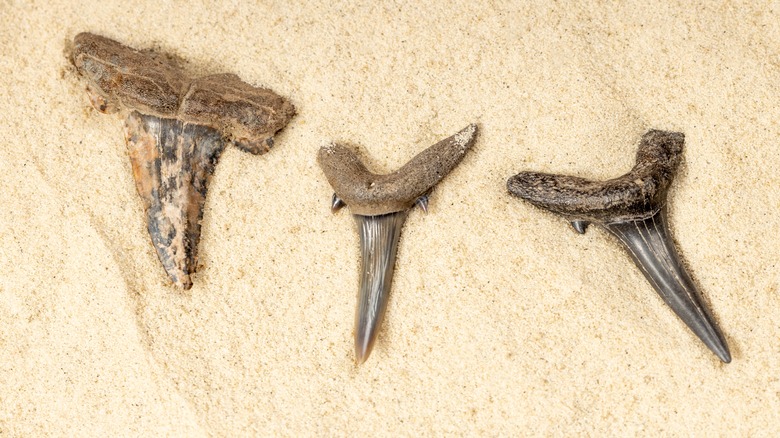It Turns Out An Extinct Species Of Giant Panda Had A Wildly Unexpected Habitat
According to National Geographic Kids, pandas of all shapes and sizes are a rare find. They currently only exist on earth as one species, scientifically referred to as Ailuropoda melanoleuca. You might know this bear as the giant panda, a 300-pound wonder known for scarfing down anywhere from 26 to 84 pounds of bamboo per day. Its distinct black eyes nestled into a thick coat of black and white fur have become quite the international symbol, for both the 2022 Beijing Olympics and the entire country of China (via Olympics).
The World Wildlife Fund reports that there are only about 1,800 giant panda bears left on the entire planet and they only reside in approximately six mountain ranges, all of which are located in China (also per World Wildlife Foundation). When the giant panda is spotted, it is often amid the bamboo-laden landscapes of the Minshan and Qinling mountains. For this reason, most people think of the panda as synonymous with China, so much so that the bear is regarded as the country's national treasure.
Paleontologists now believe there was once a European panda living in Bulgaria
According to Smithsonian Magazine, researchers working in collaboration with paleontologists directed their attention to archived fossilized teeth and discovered a new species of ancient panda. This species, A. nikolovi, is not exactly the same as today's giant panda, but is believed to be a distant relative. And in this case, distant relative refers not only to its physical attributes but also to where it was living on the map.
Unlike modern-day pandas, which can be observed frolicking through the woody bamboo branches of China's Sichuan, Gansu, and Shaanxi provinces (via World Wildlife Foundation), A. nikolovi thrived in the throes of the swampy, humid Bulgarian forests during the Miocene Epoch, a period that took place more than 6 million years in the past. Hailing from a different location also suggests this bear, which might have been around the same size as today's giant panda, likely had a different sort of diet, consisting of soft plants rather than hard bamboo stems.
How do the researchers know this? The answer lies in a solitary bag of teeth (via Mashable).
Clues of A. nikolovi's location and lifestyle were discovered in a bag of teeth
Mashable reports that in the late 1980s, paleontologist Nikolai Spassov happened upon a set of archived animal tooth fossils nearly forgotten in the National Museum of Natural History in Bulgaria. He was taken aback by the upper canine and upper carnassial teeth stashed away in a bag cryptically labeled "Guredjia," emblazoned with the handwriting of another paleontologist, Ivan Nikolov, who was a 1970s museum staff member (per Smithsonian Magazine). "I realized that I was holding in my hands the remains of a new species of fossil panda," he explained in an interview with Mashable reporters.
However, it would be years before Spassov would figure out that the cryptic writing was describing an ancient village situated in the Ihtimanska Sredna Gora mountains of northwest Bulgaria. That village was once known as Ognyanovo and is likely the place this extinct giant panda once lived.
Further scrutiny of the fossilized teeth suggests this panda survived on a softer diet than bamboo, consisting entirely of plants. Scientists suspect the panda was not a vegetarian by choice but by necessity, having opted out of the competition against other carnivores for meaty morsels, a dietary change that might have sustained its survival, at least until a devastating natural disaster wiped out the last of these pandas.
The giant European panda's extinction is attributed to the Messinian salinity crisis
According to Smithsonian Magazine, the origin of the giant panda has been a hot topic for debate in the scientific community, with some believing all the pandas started out in Asia and some migrated to Europe, and the other school of thought believing things happened the other way around. With the discovery of this new species, a more accurate picture of the past has been painted, but the panda's origin remains an enduring mystery.
Now, thanks to the discovery of A. nikolovi, alternatively referred to as the giant European panda, these bears are tied to another mystery, this one involving a cataclysmic event. According to Science Direct, the Messinian salinity crisis, the flood believed to have separated Earth's oceans from the Mediterranean Sea, caused critical ecological damage. The timeline of events suggests that this ancient vegetarian panda just might have been driven into extinction when the seas of the Mediterranean grew dry and the food the panda survived on became scarce or even non-existent.



